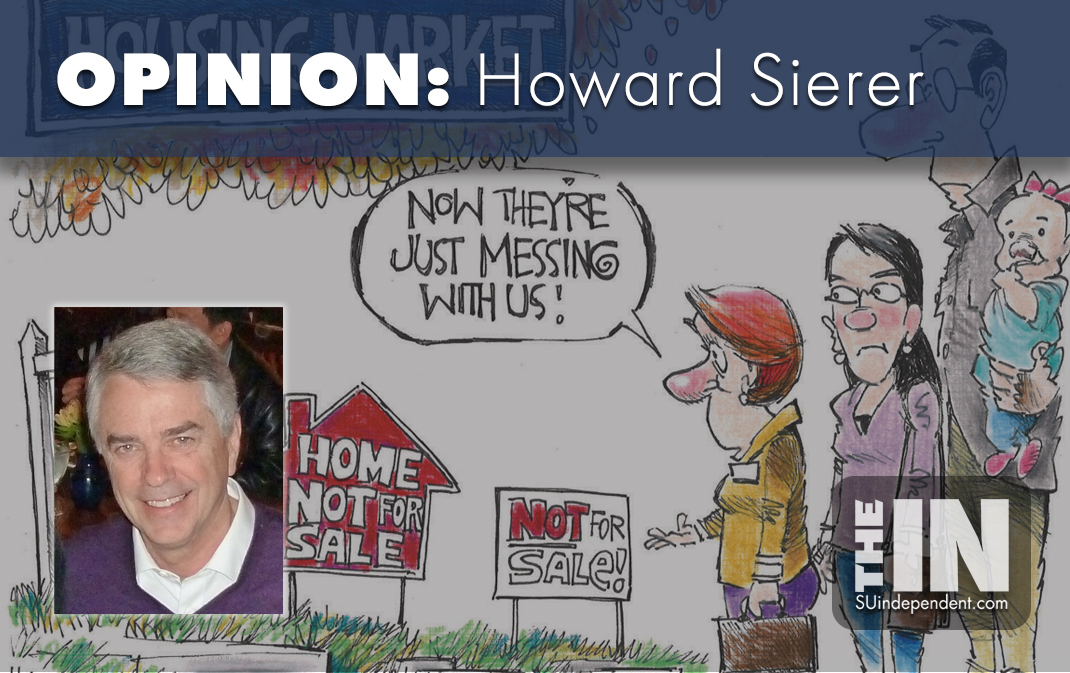
Getting Utah Housing Right
– By Howard Sierer –
Utah has been the fastest-growing state in the country from 2010 to 2023 due to a combination of in-migration from other states and our state’s high birth rate. That population growth came during a decade-long, nationwide shortfall in new home construction following the Great Recession of 2007-2009. The result: Utah will be short about 37,000 housing units in 2024.
A recent report titled “State of the State’s Housing Market, 2022-2024” by Jim Wood and Dejan Eskic, researchers at the University of Utah’s Kem C. Gardner Policy Institute, addresses the confused condition of the state’s housing.
Despite the building boom we saw over the last decade, Utah has been running behind the demand for housing needed by our booming population. As a result of demand exceeding supply, the report notes that housing prices rose a stunning 72% from the first quarter of 2018 to the end of 2022.
Census Bureau data shows that the greatest number of immigrants to Utah come from California. About 10,000 came in 2010, growing to 15,000 by 2015 and reaching 18,600 in 2022. These numbers far exceed second place Idaho (7,700) and third place Texas (7,000) as immigrant origins.
California immigrants bring lots of cash with them, having sold houses in California at prices that shock longtime Utah residents. These Californians see Utah houses as bargains and in many cases, entered into bidding wars, a major contributor to the dramatic housing price increase of the last five years.
However, as the Federal Reserve began raising interest rates to combat government-caused inflation, mortgage rates spiked from less than 3% to as high as 8%. As a result, the building boom ended abruptly, with the report noting that as by the second quarter of 2023, the number of building permits issued statewide dropped 35%, sales of existing homes fell 23% and the median house price dropped 10%.
Lower housing prices still leave prices far higher than they were even five years ago and out of reach for those young families with median-level incomes who were living and working in Utah. In the second quarter of 2023, the median income household in the Salt Lake City metro area could afford only about 21% of the homes sold in that area (an affordable housing market would mean the median income household should be able to afford 50% of homes sold).
The report states, “Only 15% of Utah’s renter households have enough income to purchase a modestly priced $300,000 to $400,000 home.” There doesn’t appear to be much hope for them in the near future, as high interest rates and housing prices will “continue to exclude a growing share of renters from home ownership.”
When the housing report says Utah is short 37,000 housing units, that doesn’t mean 100,000 people who have the means to rent or purchase are living on the street. Those wanting to move here who aren’t able to secure housing prior to their move just won’t immigrate. Almost all who are living on the street or living with relatives today don’t have the means to rent or purchase even modestly priced units.
So what to do? Gov. Cox wants the state to build 35,000 new starter homes in the next four years. His proposed $150 million “Utah First Homes” budget proposal includes adding another $50 million to the First-time Homebuyers Assistance Program created by the Legislature last session. The program gives new buyers access to as much as $20,000 to help with a down payment or closing costs. The state money can only be used toward a “newly constructed but not yet inhabited home” that doesn’t cost more than $450,000.
Government’s role in regulating the economy is clearly vital. But I am always leery when government takes direct action as an economic player, in this case funding certain types of housing to fulfill what it hopes will be wanted by consumers several years in the future when those homes are completed. Free markets are always distorted when government becomes the “elephant in the room” by taking an active role beyond regulation.
Naturally, rather than let market forces respond to customer demand, Cox says the state needs to “get the government regulation piece of this right” to “see many, many more single-family detached starter homes.” Like many well-intentioned government programs, Cox’s program has completely legal but unintended consequences. For example, he wants the legislature to implement restrictions such as preventing corporate entities from using the homes as an investment and purchasers from using the properties for short-term rentals. Despite these or other regulations, there will be unintended consequences.
I applaud his goal but I believe market problems are best solved by allowing imbalances of demand and supply to work themselves out, in this case by letting builders find innovative ways to provide “starter homes.” This process is what economist Adam Smith called the “invisible hand” that allows free markets to respond to what buyers want.
Nonetheless, I applaud one aspect of Cox’s plan: to establish a Starter Home Innovation Fund with $5 million to incentivize finding solutions to the state’s housing affordability crisis. He also wants to recruit an off-site home manufacturer to the Beehive State to offer another low-cost housing option. To me, these are legitimate roles for government to play: funding research into high-potential but uncertain ideas and demonstration projects.
Housing gets lots of attention since it’s often our largest expense. With only 21% of those with median incomes able to purchase homes for sale, our elected officials feel pressure to step in. Sadly, history shows that government is almost always clumsy and intended help almost always arrives too late.



